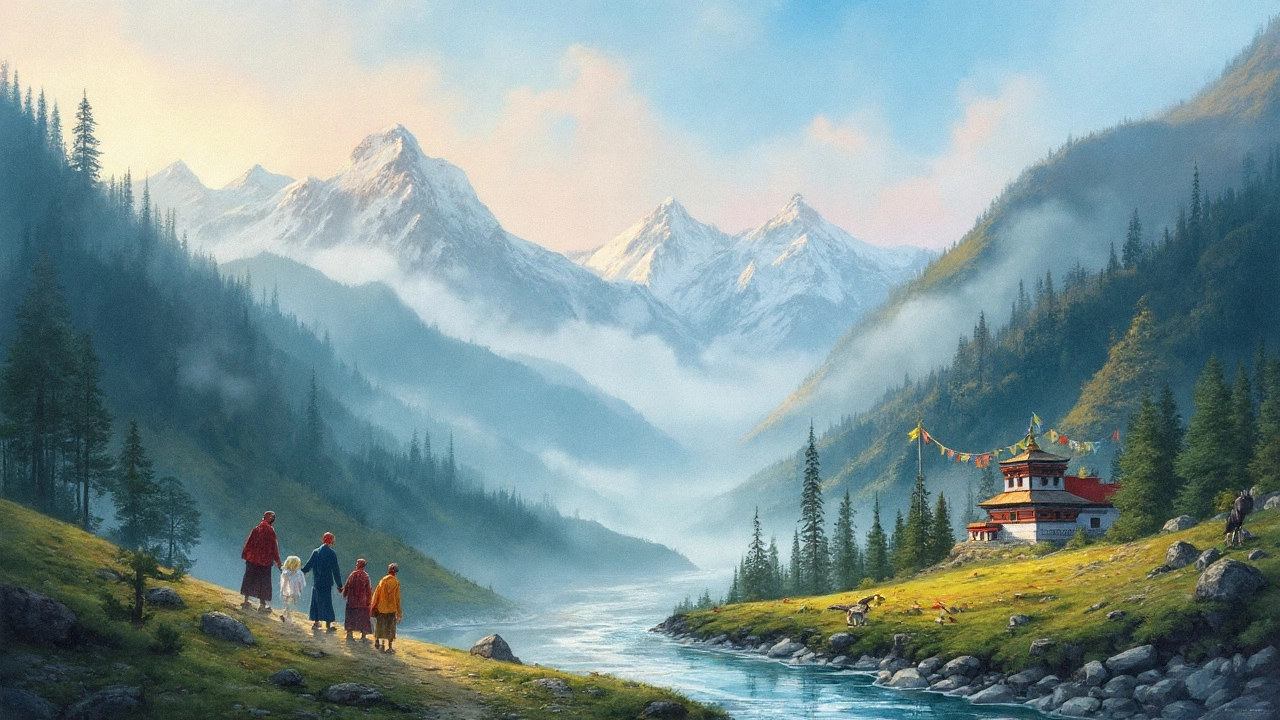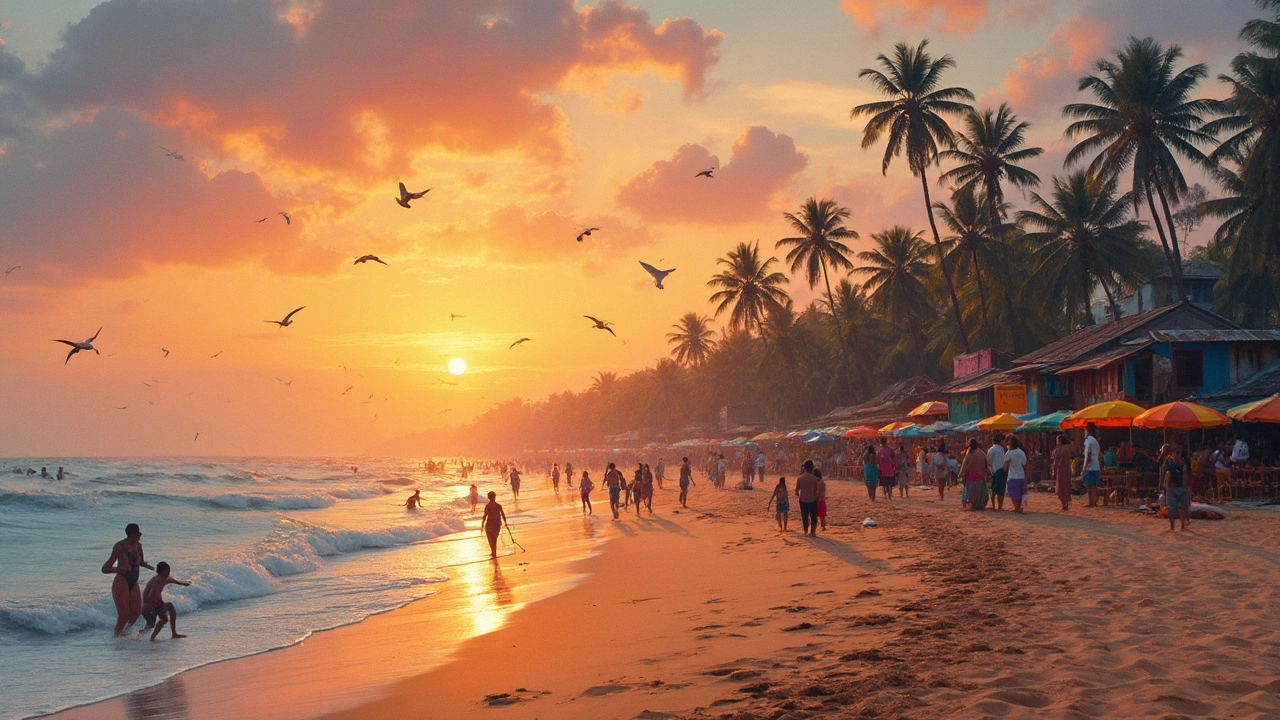Discovering North India: A Traveler's Guide to Selecting Your Perfect Destination
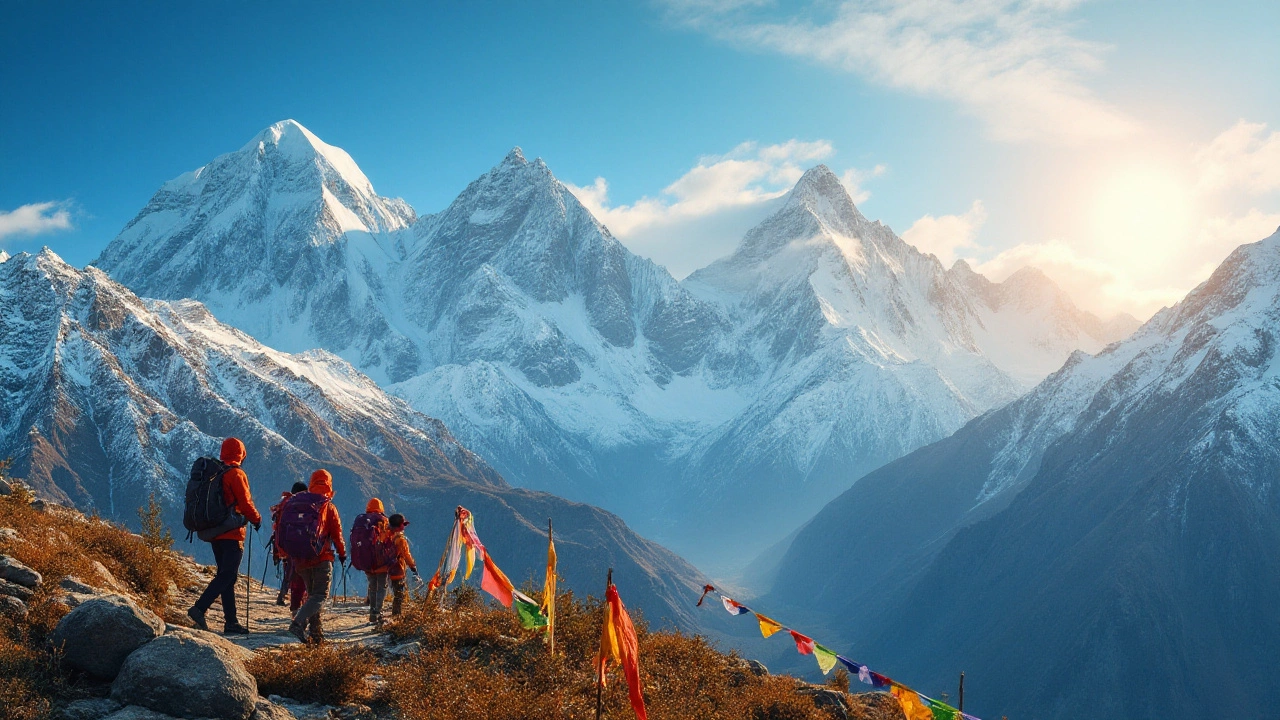
North India is a tapestry woven with vibrant colors, timeless traditions, and awe-inspiring landscapes. It's a region where the past and present exist harmoniously, offering experiences that leave an indelible mark on the hearts of travelers.
Deciding where to venture first in this vast territory can feel like standing at a crossroads of fantasy. Each path promises something remarkable—be it the spiritual serenity found in the sacred Ghats of Varanasi or the architectural marvels of Mughal heritage echoed in Agra's grand facades.
Embrace the journey as an exploration of both India's diverse cultures and its stunning natural scenery. Whether you yearn to be lost in the bustling bazaars of Delhi or breathe in the crisp air of a Himalayan trek, each choice carries the potential for adventure and discovery.
- Cultural Richness
- Natural Wonders
- Adventure Seekers
- Festivals and Events
- Historical Landmarks
- Cuisine and Hospitality
Cultural Richness
Exploring the cultural richness of North India is like diving into a living, breathing canvas painted with centuries of traditions, festivals, and art forms. Each corner of this region tells stories, steeped in history and belief, offering travelers an immersive journey through time. Let’s begin with the effervescent scenes in Rajasthan, where cities like Jaipur and Udaipur charm with palaces standing as guardians of a bygone era. The vibrancy of traditional Rajasthani attire, ranging from the colorful turbans to the exquisite saris, is a sight to behold, reflecting the warmth and vivacity of its people.
North India is also home to some of the most sacred places that entice pilgrimages, each year adding a spiritual hue to the region’s cultural tapestry. Varanasi, on the banks of the holy River Ganges, is one such place where the spiritual essence pervades the air. Observing the Ganga Aarti, with its mesmerizing flames and rhythmic chants, often gives visitors an inexplicable sense of peace. Not to forget, Uttar Pradesh boasts architecturally magnificent temples, such as the Kashi Vishwanath Temple, which add a mystical charm to the sacred atmosphere.
The heart of Delhi, with its fusion of the ancient and modern, offers another dimension to this cultural mosaic. The Old Delhi area immerses you in narrow lanes teeming with spice markets and street vendors selling traditional Indian snacks like parathas and jalebis. The city is dotted with landmarks like the Red Fort and Qutub Minar, historical monoliths that whisper stories of the bygone Mughal empire. As renowned author Mark Tully once said,
"India is a very spiritual and deeply religious country, and its culture is steeped in thousands of years of history and philosophy."
Haryana and Punjab further contribute to this cultural potpourri with their emphatic embrace of life. From the spirited Bhangra performances that mark every celebration to the luxurious feasts that define Punjabi hospitality, the joy of living is both seen and felt intensely here. In Punjab, the Harmandir Sahib or the Golden Temple, stands as a beacon of equality and service, with its doors open to all, irrespective of faith or background. The idea of 'Seva' (selfless service) observed here, where volunteers work tirelessly to provide meals for thousands daily, is a testament to the generous spirit that defines North Indian culture.
A journey to North India isn’t just a holiday but an encounter with thousands of years of splendid cultural dynamism. Whether you are marvelling at Rajasthan's flamboyance or being pacified by Varanasi's spiritual aura, the cultural richness echoes throughout your travels. Immersing oneself in this vibrant tapestry not only enriches the soul but alters the perspective, offering travelers new insights and a deep appreciation for North India's dazzling diversity.
Natural Wonders
As one meanders through North India, the sheer diversity of its natural splendor becomes gloriously apparent. This region, a masterpiece painted by time and elements, is home to some of the most enchanting landscapes known to humankind. The great Himalayas rise majestically in the north, their snow-draped peaks whispering tales of ancient earth-shaping forces. Here, amongst these colossal giants, whispers of winds and the silent footfalls of elusive snow leopards compose a symphony unlike any other. For those inclined towards adventure, the Himalayan trails present not only a physical challenge but also a spiritual journey. The treks range from the serene Parvati Valley to the dizzying altitudes of the Great Himalaya National Park, each offering breathtaking vistas and a chance to connect with nature on a deeper level.
The Gangetic Plains, a lush and fertile tapestry, unravel stories of rivers like the Ganges meandering through its vast stretches. This river, sacred to many, acts as a life-giver, nourishing the lands as it journeys from mighty glaciers to the expansive plains. In this region, the ebb and flow of the Ganges is as intrinsic to daily life as the sun rising each day. Rainforests in the Terai arc add to the lushness, hosting a wealth of biodiversity, providing a rare opportunity for wildlife enthusiasts to spot majestic beings like elephants and Bengal tigers.
Valleys and Ranges
The enchantment doesn't stop at mountains and plains. North India boasts verdant valleys, each a paradise in its own right. Take the Kashmir Valley, famously dubbed 'Paradise on Earth'. During spring, it erupts into a riot of colors as flowers bloom in unison, their vibrant hues mirrored in the clear waters of Dal Lake. Here, traditional shikaras glide silently, offering an ethereal experience as travelers float past floating gardens and wooden houseboats. The valley is also renowned for its saffron fields, where the world’s most expensive spice grows under the watchful eyes of towering mountains.A bit further southwest, Leh and Ladakh present opportunities to visit ancient monasteries perched on lofty cliffs, projecting a sense of peace and timelessness.
"Ladakh, with its rugged lunar landscapes, offers a beauty that is as stark as it is sublime," says renowned travel writer Paul Theroux.This barren beauty is punctuated by turquoise lakes like Pangong Tso, whose waters change color with the shifting sun. The Ladakh region also challenges visitors with its high-altitude climate, offering a stark contrast to the lush valleys and plains.
Enthusiasts of flora and fauna can wander into mystical forests, such as those in Himachal Pradesh, where Deodar Cedar trees stand sentinel, their inhabitants a myriad of birds and smaller creatures of the wild. The Great Himalayan National Park is another shelter for endangered species and an explorer's delight, offering trails that cut through dense vegetation, revealing the secrets one step at a time. Each of these places, from the jagged peaks to the sweeping plains, tells its own story, inviting visitors to be a part of something grand and eternal.
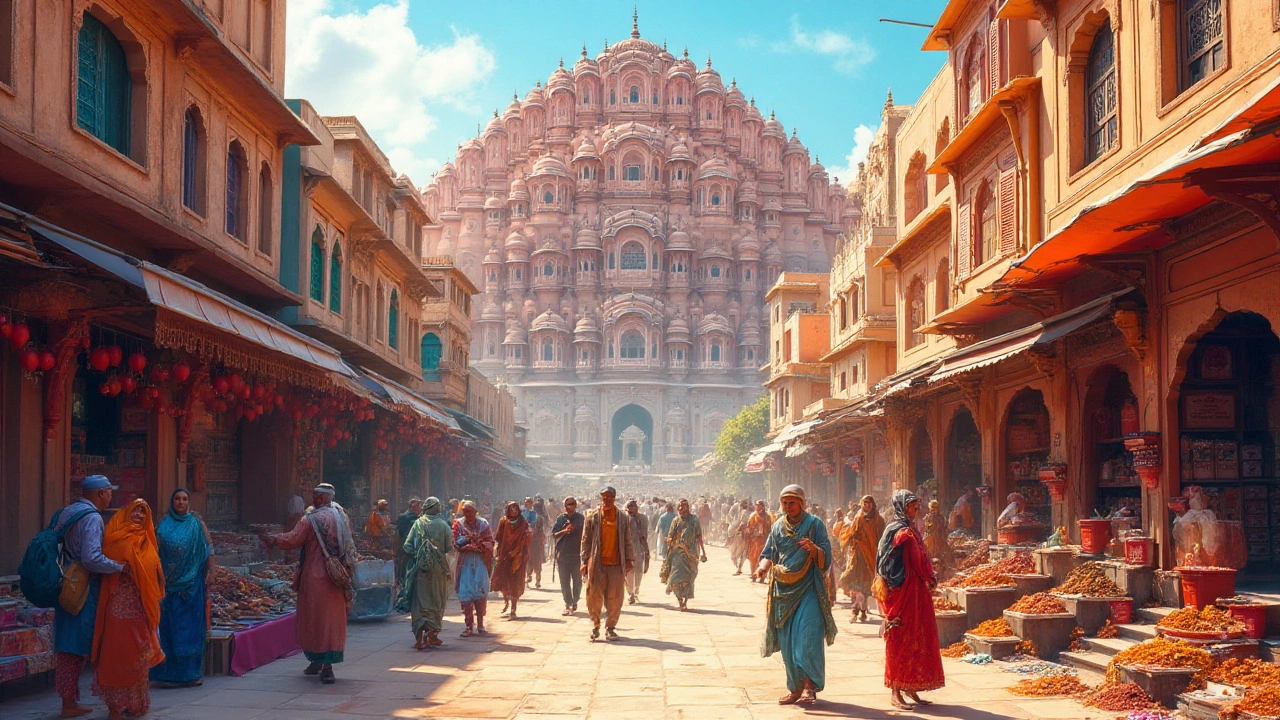
Adventure Seekers
For those with a heart for thrill and an appetite for the raw essence of nature, North India is a playground waiting to be explored. The Himalayan Range, a majestic guardian of the north, offers an array of adventures that leave even seasoned travelers in awe. From the soaring peaks of Himachal Pradesh to the verdant valleys of Uttarakhand, opportunities for trekking, climbing, and even skiing abound. Wanderlust leads many to the paths less traveled, where serenity meets adrenaline against backdrops of unparalleled beauty.
Trekking in the Himalayas is a quintessential experience. Trails like the Valley of Flowers, a UNESCO World Heritage Site, display a magical medley of flora, while more challenging routes, such as the Roopkund Trek, reward with glacial mysteries and mythic tales of skeletal remains. According to an experienced mountaineer, “The allure is in the mystery—a feeling of stepping into a landscape painted by the gods themselves.”
River rafting is another exhilarating activity that draws daredevils to Rishikesh, a spiritual hub doubling as India’s rafting capital. The Ganges River offers rapids that range from grade III to V, ensuring an electrifying ride. The thrill of navigating the swirling waters while surrounded by steep cliffs and lush foliage is unforgettable. Parallel to the fierce river action, travelers can find peace in yoga retreats, providing a perfect balance to the adventure.
If you’re drawn by the idea of gliding across snow-capped horizons, the slopes of Auli provide an ideal skiing destination. Known as one of Asia’s finest ski resorts, it attracts both novices and experts eager to carve the pristine snow. The backdrop of Nanda Devi, peering through a panorama of white, is a remarkable sight. The region's appeal lies not only in its slopes but in its blend of cultural richness and natural grandeur.
Adventure doesn’t stop on land or water; paragliding in the skies above Bir Billing in Himachal Pradesh promises an unmatched feast for the eyes and soul. This launch site is globally acclaimed for hosting international paragliding events, offering both solo and tandem flights that sweep over scenic landscapes. Pilots and enthusiasts here find the skies a canvas for weaving tales of freedom and flight.
Adventurers seeking a more cultural vibe can partake in Ladakh’s annual winter festival. This remote region, often referred to as 'Little Tibet', comes alive with local sports and vibrant masks, celebrating life at freezing altitudes. Here, the stark, lunar-like landscapes set the stage for unforgettable cultural experiences.
Want to capture North India's essence through adventure? A visit can be as varied and unique as its regions. Each offers the promise of unforgettable stories, of challenges met and vistas conquered. It’s this blend of excitement and natural splendor that makes North India an irresistible destination for those who seek more than just travel—they seek an adventure of a lifetime.
Festivals and Events
Celebrations in North India are a kaleidoscope of color and emotion, where ancient rituals intertwine with modern day revelry. Festivals are not merely dates on a calendar here; they are monumental occasions that bring communities together, celebrating life in all its exuberance. From the snowy peaks of Kashmir to the bustling streets of Delhi, each region adds its unique flavor to the array of festivals that dot the landscape throughout the year. Holding steadfast to traditions yet embracing contemporary influences, these events offer intimate glimpses into the diversity and unity that India cherishes.
Amongst the most iconic is Diwali, the Festival of Lights, celebrated with unmatched zeal across North India. Homes and streets come alive, illuminated by millions of lights and diyas, as families indulge in sweets, prayers, and the sharing of gifts. Diwali signifies the victory of light over darkness, and its joyous spirit captivates tourists and locals alike. In stark contrast, Holi, known as the Festival of Colors, is a joyous bursting of colors, where strangers become friends in the shared merriment of throwing colored powders. Legend speaks of Holi as a celebration of the divine love of Krishna and Radha, and it’s a spectacle that one simply cannot miss when in North India.
"In an astonishing affirmation of culture and faith, the Kumbh Mela attracts millions to Haridwar, hailed as one of the largest human gatherings on Earth." - The New York Times
Another must-see is the Kumbh Mela, which typifies the confluence of spirituality and humanity. Held every 12 years in places like Haridwar and Allahabad, this gathering attracts massive crowds of pilgrims and tourists alike, all seeking spiritual cleansing in sacred rivers. The scale and devotion observed at the Mela is staggering, making it a transformative experience for those in attendance. Each gathering is an epic tale of faith reverberating through the hearts of millions, underlining the deep spiritual roots of India.
The Hornbill Festival in Nagaland offers a completely different experience, showcasing the vast cultural heritage of the numerous tribes of the region. Though not a traditional North Indian festival, it serves as a reminder of the rich ethnic diversity of India. Visitors are treated to traditional dances, music, and crafts, painting a vibrant picture of indigenous communities whose traditions have remained unaffected by modernity. The festival is a vital portrayal of cultural preservation, rooting itself in the identity of India’s vast multiculturalism. For the eco-conscious traveler, the International Yoga Festival in Rishikesh presents opportunities for wellness and tranquility amidst the scenic beauty of the Himalayan foothills.
Throughout the year, smaller yet equally meaningful festivals occur, each narrating stories of the region’s past and present. Be it the winter carnival in Manali or the majestic desert festival in Jaisalmer, there is always something to witness and partake in. Timing your trip to coincide with these events can offer profound insights into local life, enriched with the tastes, sounds, and sights that define Indian tourism. Observing and participating in these celebrations not only enhances one's travel experience but also creates enduring connections with the people and cultures of India, making each visit unique and unforgettable.
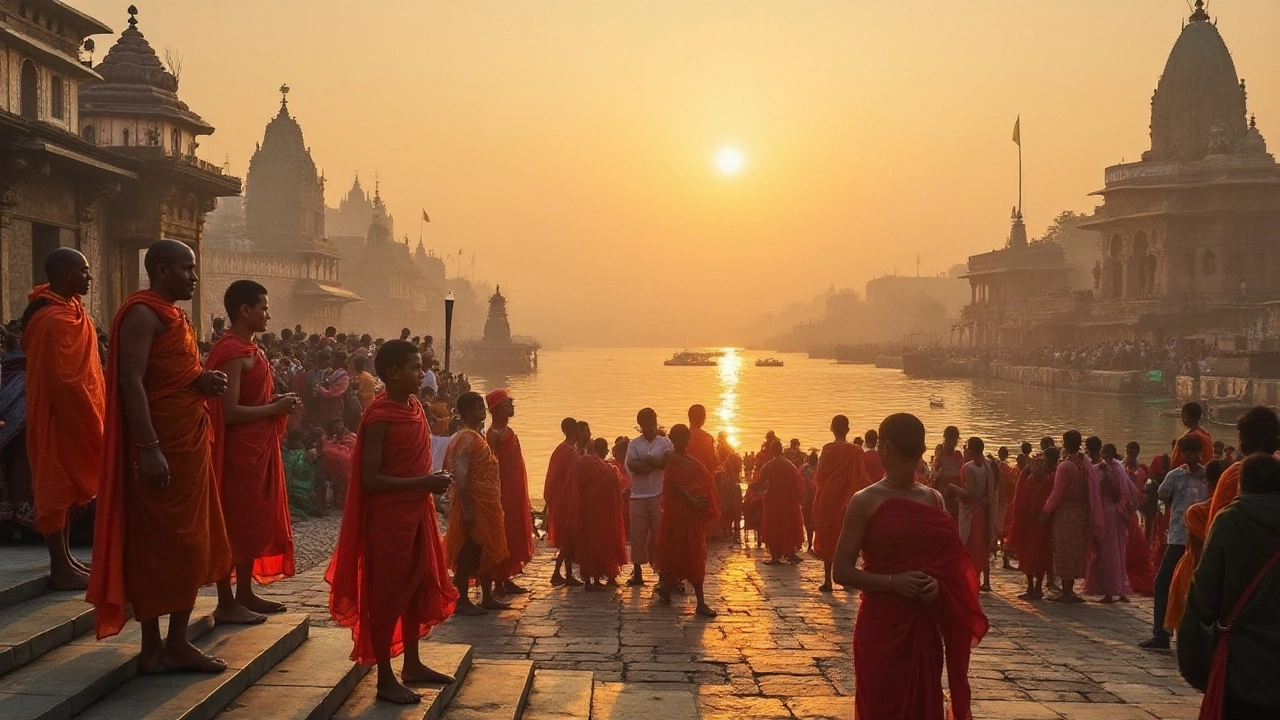
Historical Landmarks
When you think about North India, your mind may first conjure images of ancient palaces and monumental forts that speak of the country's storied past. It's no wonder North India is a hub for history enthusiasts. From the heights of Delhi's Red Fort, a UNESCO World Heritage site, the panorama of Mughal architecture unfolds a narrative of empire and power. The fort is a living testament to the ingenuity and artistic passion of the Mughal dynasty which is known for influencing the region's culture and architecture. As you wander through its red sandstone walls, you can almost feel echoes of the past reverberating around you.
Travel a bit further, and you reach Agra, where the immaculate beauty of the Taj Mahal lies. Often dubbed as a 'romantic poem in stone,' this mausoleum was built by Emperor Shah Jahan in memory of his beloved wife Mumtaz Mahal. This iconic 'Crown of Palaces' is more than just a symbol of love; it’s an architectural marvel that combines elements of Islamic, Persian, Ottoman Turkish, and Indian architectural styles. You may find yourself lost in the intricacies of its marble inlay work known as pietra dura, creating a mosaic of design so fine it paints the marble like a canvas.
Another jewel in the treasure chest of North Indian history is the city of Jaipur, renowned as the Pink City. Its grandiose Amber Fort sits atop a hill, offering views that are nothing short of breathtaking. Inside, the artistry and imagination of a time gone by blend effortlessly with the landscape. The fort's regal halls such as the Sheesh Mahal, or Mirror Palace, present an enchanting vision where a single light can create cascades of reflected luminance.
Varanasi stands out not only as one of the world's oldest inhabited cities but as a spiritual beacon where history and divinity intertwine along the sacred banks of the Ganges. It is here on these ghats where rites of life and death play out daily. Walking through its narrow paths lined with chaos and calm alike, you feel history is not merely displayed but lived. About this place, Mark Twain once said,
"Varanasi is older than history, older than tradition, older even than legend, and looks twice as old as all of them put together."
For those fascinated by royal legacies and the defense strategies of ancient kingdoms, the forts and palaces scattered across Rajasthan tell tales of dynastic glory and valiant battles. The Mehrangarh Fort in Jodhpur, untouched by time, rises imposing above the city and is known for its incredible museum housing an extensive collection of relics. When you walk its great ramparts, you can almost hear the echoes of battle cries that defended these lands through the ages.
To gauge the rich tapestry of North Indian heritage is to embark on a journey across time and narrative. Each monument holds within its structure the tales of vision, ambition, love, and tragedy, intricately weaving the past with the present. As you explore these historical landmarks, remember that in every stone, there’s a story waiting to be uncovered, a story that enriches your travel and understanding of this vibrant, diverse region.
Cuisine and Hospitality
When one travels through North India, the journey is not just through space but through an exquisite palette of tastes. The region's cuisine reflects its diverse cultural tapestry, where culinary traditions are passed down generations, each adding its own unique spice. From the hearty flavors of Punjab's butter chicken to the rich, creamy gravies of Mughal cuisine in Delhi, every meal is a celebration of the land's bounty and its people's warmth. As you traverse cities and villages, you'll find that food is more than sustenance here; it's an art form, an expression of love and tradition. The variety is staggering—Dum Aloo from Kashmir, rich with the perfume of spices like saffron and cloves, to Rajasthan's Dal Baati Churma, a dish born out of the desert's harsh conditions, representing resilience and innovation.
Hospitality in India is legendary, rooted in the ancient philosophy of 'Atithi Devo Bhava,' which translates to 'The Guest is God.' This reverence for guests is palpable in every part of Indian tourism, seen in the warm smiles of hotel staff, the sincere offers of tea in homes, or the guides eager to share the hidden stories of their lands. Whether you are staying in a luxurious palace hotel in Jaipur or a humble homestay in Himachal, the sense of welcome remains unshaken. It’s this genuine warmth that transforms strangers into friends, crafting memories that linger long after the journey ends.
According to a study by the Ministry of Tourism, India's culinary tourism has witnessed an increase of 20% annually, with North India emerging as one of the hotspots. This region's ability to enchant travelers with its flavors and hospitality continues to grow stronger by the day.
| Dish | Origin | Main Ingredients |
|---|---|---|
| Butter Chicken | Punjab | Chicken, Butter, Cream, Spices |
| Dal Baati Churma | Rajasthan | Lentils, Wheat Balls, Ghee, Jaggery |
| Rogan Josh | Kashmir | Lamb, Yoghurt, Spices |
“Food is the ingredient that binds us together.”This quote rings especially true in North India, where shared meals become the centerpiece of conversations, of cultural exchange, and of fondly recollected experiences. Whether you are traversing bustling streets or serenely dining under a starlit desert sky, food serves as the link between heritage and hospitality in this incredible land.
